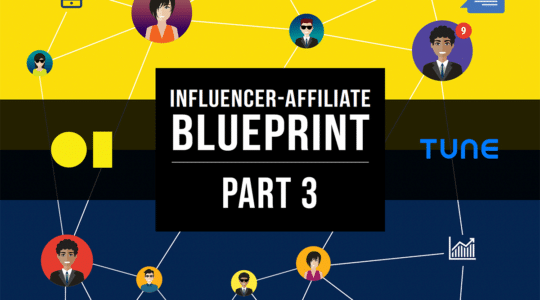
Acquiring new high-intent customers is a critical challenge for any business, especially in the finance market. Customers rely heavily on word-of-mouth and take many factors into consideration before converting, making the stakes even higher.
Traditional marketing strategies often miss the mark, struggling to hit the sweet spot between ad spend and customer quality. This is where outcome-based marketing (OBM) comes into play. OBM revolutionizes customer acquisition by offering a more effective, performance-based approach, positioning brands to access previously untapped high-intent traffic, all while sharpening their competitive edge in the financial services landscape.
What is Outcome-Based Marketing (OBM)?
Outcome-based marketing (OBM) is a results-driven strategy ideal for financial services marketers. With OBM, you only pay when specific KPIs crucial to your business are achieved, such as acquiring a qualified lead, loan application submissions, or new account openings. Campaigns are tailored around these down-funnel events, enabling you to test performance across various channels and pinpoint the most effective placements for converting traffic into customers.
Overcoming Customer Acquisition Pain Points with Outcome-Based Marketing (OBM)
Discover how an OBM model helps tackle common obstacles in scaling customer acquisition in the finance industry.
High Costs per Acquisition: OBM helps manage high acquisition costs by ensuring you only pay for specific, measurable outcomes such as qualified leads or completed applications. This ensures every dollar you invest drives growth. With continuous optimization, OBM pinpoints where your best customers come from, enabling you to scale effectively without overspending.
Inefficiency in Targeting: OBM enhances targeting by using placement-based strategies across digital channels, geo-targeting specific locations, and dayparting for optimal ad timing. For finance marketers, this means precisely directing ads to high-potential leads. AI-driven optimization further refines targeting, continuously uncovering new customer acquisition opportunities and improving campaign efficiency.
- Working with an outcome-based marketing expert like Perform[cb] connects you with top-performing partners to reach your ideal consumers. For example, a national mortgage marketer achieved a 481% increase in biannual growth and a 78% boost in conversions in just one quarter by leveraging Perform[cb]’s expertise in tracking KPIs, managing volume, and analyzing competitive payouts.
- Investing in a performance marketing solution that can accurately track cross-channel conversions while protecting consumer data and complying with industry regulations is especially important for finance brands. A privacy-centric tracking platform like TUNE can ensure that every conversion is measured, whether it takes place in a web browser or a mobile app, without using third-party cookies or storing sensitive customer information.
Regulatory Costs: OBM allows you to work with partners who understand and adhere to financial regulations. These partners handle compliance aspects related to their marketing efforts, reducing the costs and risks associated with regulatory adherence.
- From FTC and SEC advertising laws to content compliance and bank regulations, Perform[cb] ensures brands’ campaigns are protected through enhanced compliance monitoring, in-depth partner vetting process, and patented, built-in anti-fraud technology.
Measuring ROI: OBM prioritizes measurable results, simplifying ROI tracking even with complex customer journeys and multiple touchpoints. By paying for outcomes, you gain clearer insights into which channels and partners are delivering value, improving your ability to evaluate and optimize marketing effectiveness.
Lead Quality vs. Quantity: OBM emphasizes paying only for leads that meet specific criteria and convert into customers. This is especially crucial for financial services brands, where high acquisition costs are exacerbated by a significant portion of unqualified leads. By focusing on quality over quantity, OBM helps mitigate these costs and ensures a more efficient allocation of ad spend.
How Financial Services Brands Can Get Started with Outcome-Based Marketing (OBM)
Here are a few tips on how financial marketers can begin testing on a 100% performance-based model:
- Define Clear Outcomes: Set specific goals like acquiring qualified leads or increasing conversions. This helps measure campaign effectiveness and ensures you’re focusing on high-quality metrics.
- Leverage Data and AI: Use tools like Google Analytics for segmentation, Salesforce for predictive modeling, HubSpot for behavioral tracking, and Perform[cb]’s PerformSense AI to enhance traffic quality and conversion rates by filtering out non-converting traffic based on extensive data. Choose a tracking platform like TUNE’s that offers real-time measurement and a library of dashboards and reports to get insight into what’s working and what’s not. For finance brands with business intelligence tools already in place, consider using a fully automated event delivery service such as Firehose to live stream data into proprietary systems.
- Optimizations to Scale Incrementality: Regularly review and adjust campaigns to measure and scale incremental impact. Perform[cb] uses advanced methods to isolate and test traffic, accurately assessing the impact of your marketing efforts. Set goals for key metrics like conversion rate, then use performance automation tools to automatically optimize campaigns based on those goals.
- Consider Speaking with an Outcome-Based Expert: Connect with performance marketing partners experienced in financial services who offer robust targeting and transparent reporting. Perform[cb]’s Outcome Engine leverages a performance-based model to acquire new customers alongside your existing marketing channels. TUNE’s expert team is knowledgeable about the challenges of marketing for financial services and can share learnings and best practices from years of experience.
Cutting Costs, Boosting Results
Outcome-based marketing offers a transformative approach to customer acquisition in the finance and insurance sectors. By focusing on measurable outcomes, leveraging precision targeting, and utilizing advanced tracking and analytics, marketers can significantly reduce spend without losing out on qualified customers.
Are you a financial services marketer eager to dive into outcome-based marketing? Connect with Perform[cb]’s team of customer acquisition experts and get started today!
Email TUNE’s Partnerships Team at [email protected] to learn more about performance marketing for financial services brands and how the right tracking platform can help.
Author
Blake Cantrell is the VP of Partnerships at TUNE and is a firm believer that transparent partnerships are what make businesses of all types successful. As a husband and father of two young boys, Blake is a master of setting proper expectations, negotiating, and concise, action-driven communication. When not online, Blake can be found making guitars in his garage, mountain biking, or exploring new countries with his family.



